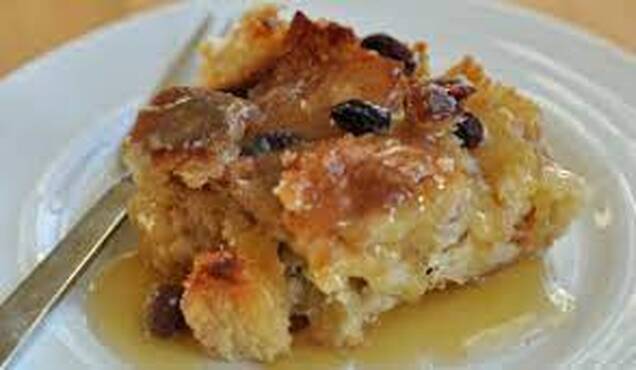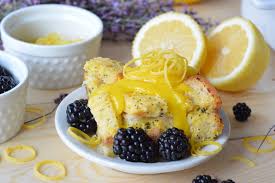|
The Dream of Spring I look through a keyhole in a dream, |
March is the magical month when the first signs of spring appear. Crocuses peek through the snow, and bright yellow daffodils sprout up from the damp, cold ground. Vibrant green asparagus and spring onions appear in our kitchen gardens, and the earth wakes up to a thousand different shades of green. This year, Easter, the universal symbol of new life, will be celebrated on the final day of March. St. Patrick’s Day will also take place on a Sunday in March, and numerous other birthday parties, baby showers and Afternoon Tea celebrations will take place this month. And let’s not forget the farmers who will make all these celebrations possible. March is the month when the first spring wheat is planted.
All of these joyful occasions will require baked goods, especially bread, as bread has long reminded the human race of civilization’s development. Thousands of years ago, humans survived primarily as hunters and gatherers. Then they discovered grain, and farming began. Flat bread, made primarily from wheat flour, salt and water, resembling today’s pita and tortillas, came first. The oldest archeological evidence of bread making was found in a 14,500-year-old site in Jordan. In about 6,000 BC, the Sumerian civilization in Mesopotamia, often referred to today as the cradle of civilization, produced early forms of leavened bread and passed this skill on to the Egyptians, who refined bread baking by adding yeast. With each improvement, bread became more flavorful, the texture was more pleasing, and the proper amount of yeast allowed the loaves to rise into beautiful, rounded shapes.In fact, the ancient Egyptians, Greeks and Romans looked to the degree of refinement in bread baking as signs of cultural growth and development. While yeast bread is an ancient art form, the invention of baking soda and baking powder are much more recent and allow bakers to create “quick breads” that do not require the long periods of time for yeast to rise prior to baking the bread. The French chemist, Nicolas Leblanc invented baking soda in 1791, and an English chemist, Alfred Bird, developed Baking Powder in 1843. These advancements fortuitously coincided with the British Victorian passion for Afternoon Tea, allowing professional and home bakers to create a limitless supply of cakes, cookies, muffins, quick breads and scones for every imaginable kind of social celebration. Even today, all sorts of special breads, quick or made with yeast, are still being created by innovative bakers. I certainly do not remember eating rosemary and truffle focaccia or yuzu and matcha muffins when I was a child.
Kathleen and I have shared many recipes for various types of bread in our website and our blogs over the years, and we hope our readers’ lives and family celebrations have been enriched as a result. Kathleen is especially adept at yeast baking and has a gift for making this ancient procedure easy to follow. I encourage you to review her May 2020 blog, which provides an easy overview of the bread baking process. Here you will learn to make Oatmeal Bread, Lemon Yogurt Poppyseed Loaf, and California’s gift to the world, Sourdough. She also shares her own recipe for Savory Black Pepper and Morels Babka, which contains asiago cheese. I think the ancient Romans would have been impressed!My April 2020 blog shares my favorite yeast bread, Danish Pastry Easter Wreath, which I hope some of you will make for your family’s Easter Celebration this year. All this glorious buttery almond-filled pastry will require of you is time and love, and your family will thank you forever. I also love making quick breads, leavened with baking powder and or baking soda. Among my favorites are Pumpkin Bread, featured in my October 2028 blog, Hawaiian Banana Bread, perfect for beginning bakers, in my May 2017 blog, and Irish Brown Bread, a hearty and flavorful dark bread that would be the star of your St. Patrick’s Day revelries. The recipe appears in my March 2021 blog.
In addition to its sacred significance in Christian tradition, bread is also responsible for improving the health, vitality, stamina and longevity of the human race. Bread can be eaten at every meal, and combined with fruits, vegetables and additional sources of protein, bread can add the healing properties of vitamins, minerals, needed carbohydrates, protein and fiber to the human diet.
Bread comes in an amazing variety of shapes and forms and serves as the foundation for gourmet delights throughout the world. The humble tortilla makes tacos, enchiladas and even huevos rancheros possible. Middle Eastern pita forms a pocket that can be stuffed with falafel, meats, cheeses and every kind of fresh vegetable. Indian nan, warm and chewy from the tandoori oven, can be filled with garlic, jalapenos, cheese and spices to complement the elegant and healthy curries of Indian cuisine. A French baguette is a work of art and has found its way to Vietnam as the receptacle of the world-famous Banh Mi sandwich. Bread is also child-friendly, and kids can easily make their own snacks when the parents are busy.
As Afternoon Tea lovers well know, bread appears in various forms in every tea party menu. Savory foods include the charming little sandwiches we have all grown to love, but mini pizzas, and savory muffins also often appear in the first course at Afternoon Tea. The Scones Course, served between the savories and the sweets, forms a bridge between the two that can include both. Savory scones can be flavored with cheese and herbs, and sweet scones often include berries, citrus fruits, maple or chocolate. And butter and jam, always served with scones, is a perfect pairing of savory and sweet. The sweets course at afternoon tea is a veritable tribute to yeast, baking powder and baking soda, with an abundant array of cakes, quick breads, cookies and pastries. As the quintessential example, Lemon Tea Bread is a favorite at tea parties world-wide. Our recipe for this classic appears in the Tea Menu Basics chapter of The Tea Book on this website.Sweetened breads such as Fruitcake, Raisin Babka, Stollen, Brioche and the Easter Breads unique to each country throughout Europe and the Middle East, are served as dessert on special occasions. As my spring and Easter gift to you this March, I am happy to share with you the recipe for one of my favorite bread-inspired desserts, Warm Bread Pudding with Lemon Sauce.
Bread Pudding, which has a relatively mild flavor, can be served with any flavor of ice cream, whipped cream, custard sauce or other appealing sauces such as chocolate, caramel, lemon or cherry. I prefer this Bread Pudding with Lemon Sauce, and we included a similar recipe in our Tea Book on this website in the “Afternoon Tea for Special Occasions” chapter in the “Afternoon Tea for a Large Group” menu. I hope you and your family will enjoy it. Please note that the Bread Pudding mixture is intended to chill in the refrigerator overnight before it is baked, so start the day before your special occasion when you plan to serve this charming dessert. And please read the recipe carefully before you begin. Making Bread Pudding is a simple process, but a few of the steps, such as squeezing the orange and lemon juice, grating the lemon peel, and melting the butter, need to be done before the other ingredients can be combined before baking.For the Bread Pudding:
- 1 1/3 cup golden raisins
- 2/3 cup fresh orange juice (from 2-3 oranges)
- 8 cups of day-old French Bread, cut into ½ inch cubes (about 1 ¼ loaves)
- 6 cups whole milk
- 5 large eggs, at room temperature
- 2/3 cup sugar
- ¾ stick (6 tablespoons) unsalted butter, melted and cooled
- 1 tablespoon vanilla extract
- 1 teaspoon kosher salt
- Baking spray
For the Lemon Sauce:
- ½ cup sugar
- 1 tablespoon cornstarch
- 1 cup boiling water
- 2 tablespoons unsalted butter
- 1/8 teaspoon kosher salt
- 2 -3 tablespoons lemon juice, (from 1 large lemon)
- 1 teaspoon grated lemon peel
Special Equipment:
2-cup glass measuring cup, large mixing bowl, medium sized mixing bowl, serrated knife, cutting board, whisk, 2-3 quart glass or ceramic baking dish, plastic wrap, small, heavy saucepan, citrus juicer, citrus peel grater, 2-cup glass storage jar with lid, large serving spoon
Makes: 8-10 servings
Preheat the Oven to 375 Degrees F. Before Step 4
Make the Bread Pudding:
- Place the golden raisins in a glass measuring cup and pour the orange juice over the raisins to macerate. Cut the bread in ½-inch cubes on a cutting board with a serrated knife. It is not necessary to remove the crusts. Measure the bread cubes until you have 8 cups.
- Place the bread cubes in a large mixing bowl, pour the milk over the bread, letting the mixture stand at room temperature, stirring occasionally until the crusts are very soft, about 2 hours.
- In a medium sized mixing bowl, whisk together the eggs, sugar, melted butter, vanilla and salt until the mixture is well incorporated. Add the egg mixture to the bread mixture along with the raisins and orange juice and stir until well combined. Spray the baking dish with cooking spray and transfer the bread pudding mixture into the baking dish. Cover with plastic wrap and chill overnight.
- Remove the prepared mixture from the refrigerator and let it come to room temperature. Preheat the oven to 375 degrees F. Gently stir the mixture and bake it in the middle of the oven for 1 ½ hours, or until the edges are puffed and golden brown. (The center will not rise and puff as much as the edges.) Serve the Bread Pudding warm by scooping out portions with a large serving spoon and pour Lemon Sauce over each portion. Refrigerate any leftovers, covered.
Make the Lemon Sauce:
In a small, heavy saucepan, stir together the sugar and cornstarch. Add the boiling water, whisking briskly. Bring the mixture to a boil over medium heat, and boil 5 minutes, stirring constantly.
- Remove the sugar mixture from the heat and add the butter, salt, lemon juice and lemon peel, stirring until the butter is melted. Serve warm over the warm bread pudding, or cool and serve at room temperature.
- This sauce may be prepared in advance and refrigerated in a glass container, covered, for several weeks. To rewarm, microwave at 30-second intervals, stirring until the sauce is warm.












